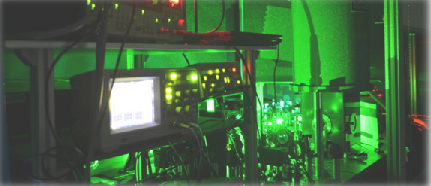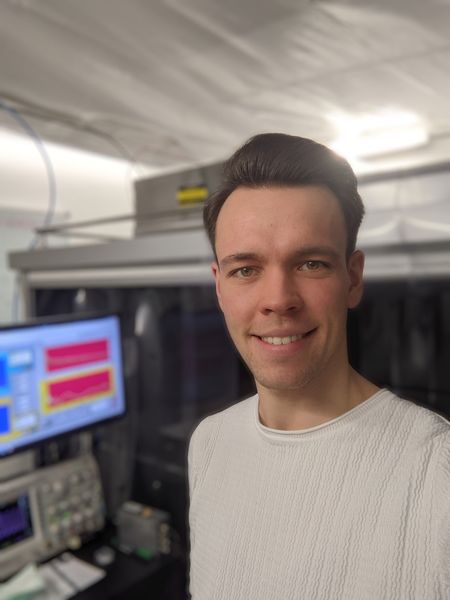How to make a “movie” using laser pulses //

Hi, I’m Julian and I’m currently a PhD student in the research group of Prof. Paul van Loosdrecht at the University of Cologne in the II. Institute of Physics. I deal with the investigation of ultrafast processes in solids, i.e., materials that are in a solid state of aggregation. I do the whole thing using ultra-short laser pulses, which have a time duration of only a few femtoseconds.
For a better understanding, I would like to briefly explain the concept of a femtosecond. A femtosecond is the scientific term for one quadrillionth of a second, i.e. 0.000 000 000 000 001 s or 10^(-15) s. This is a number with a total of 15 zeros. This means that the femtosecond is a millionth of a millionth of a second when you add a thousandth of that. Confusing? Definitive! So, here’s another clear example for you: Light travels the distance between earth and moon in one second. In one femtosecond, on the other hand, it travels just 0.3 micrometers, i.e., three ten-thousandths of a millimeter – a distance that is significantly less than the thickness of a human hair. Impressive, right?
The ultra-fast processes that we want to study with our lasers are due to electronic excitations. The electrons in a solid are very, very fast when they are excited from their state of equilibrium. This is possible with laser pulses, for example, since the energy of the laser pulses is absorbed by the electrons, stimulates them, and sets them in motion. The time scales of these electronic excitations are in the femtosecond range. It is therefore also understandable why we have to use such ultra-short laser pulses. You can imagine it as if you wanted to take a picture of an athlete sprinting using your camera or smartphone. If the Sprinter is running very fast and the shutter release speed of the camera is too slow, the image will later look blurry and will not be usable. You can hardly see anything in the picture. However, if the photo is taken faster than the athlete can move significantly, then the image is pin-sharp and you can see all the details. This gives you a lot of information about the current condition of the runner.

This way you have at least one photo, i.e., a snapshot taken. In optical spectroscopy this would be considered a static experiment. However, we would now like to understand how a “video” can now be made using ultra-short laser pulses, i.e., the processes in the solid body can be resolved and tracked over time. For this we now use two laser pulses instead of one laser. We refer to one laser pulse as a „pump“ because it is intended to stimulate the solid under investigation and thus the electrons in it. This laser pulse is set intensively in the laboratory. Now that we have put the solid and especially the electrons in it into an excited non-equilibrium state, there is a lot going on in the solid. In order to record the development of this dynamic over time, we now use a second laser pulse.
This is the so-called „probe“ that helps us to record the electron´s dynamics and their development over time. We do this by measuring the intensity of the „probe“ using a detector and a measuring device. In our experiment, we are now continuously changing the time delay between „pump“ and „probe“. This is done in order to record the state of the system at certain times and thus take a photo, so to speak. If we have now taken many of these snapshots at a certain point in time, we can string them together and thus obtain a kind of video, i.e., the temporal development of the dynamics of the electrons. In this way we can, so to speak, record a video of the dynamics of the electrons in such a solid. After the laboratory work, it is time to evaluate the measurement data and we have to think about what we can now see in our “video” and learn from it. The image shows me in the lab and how one of our experiments looks like in action.